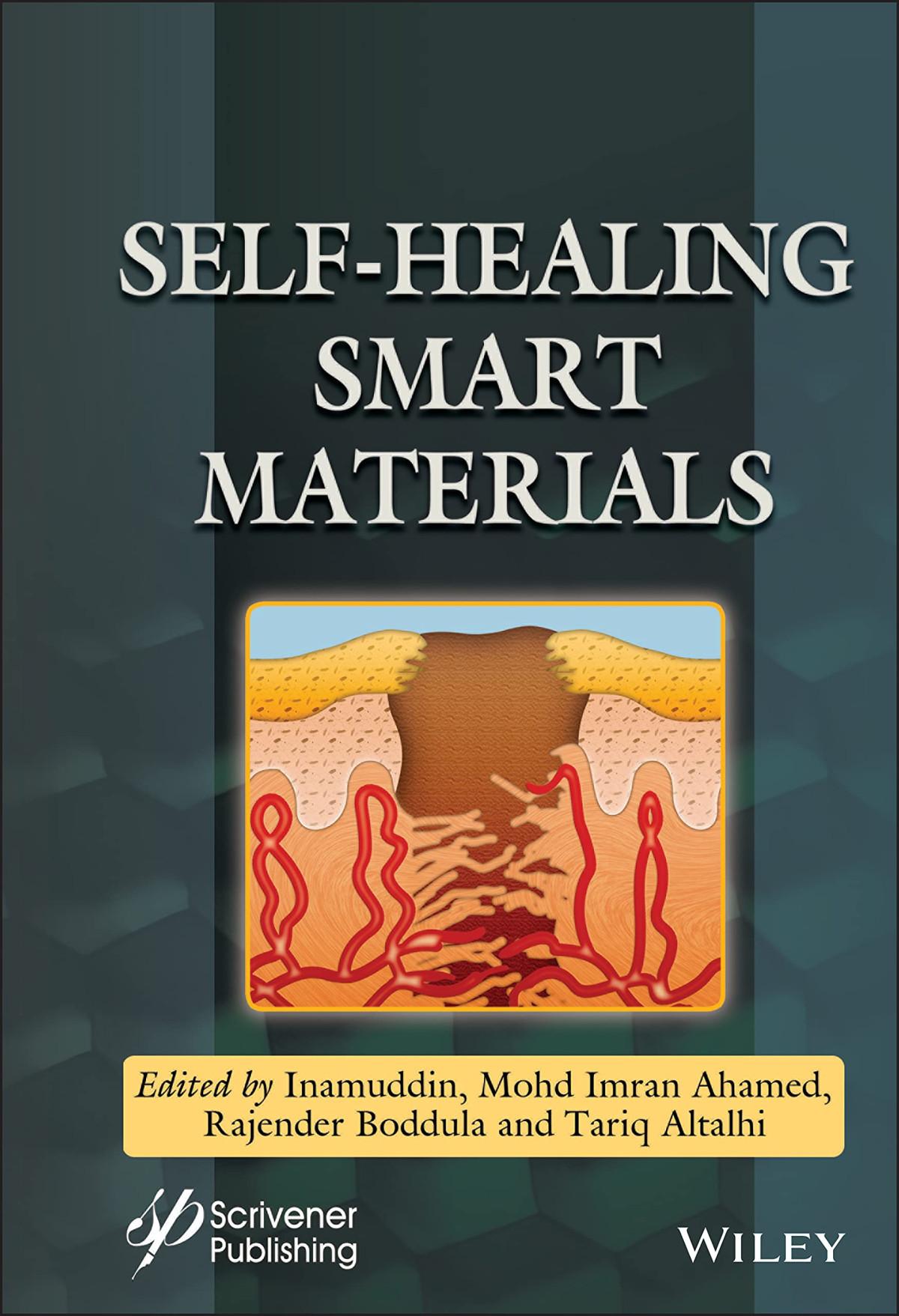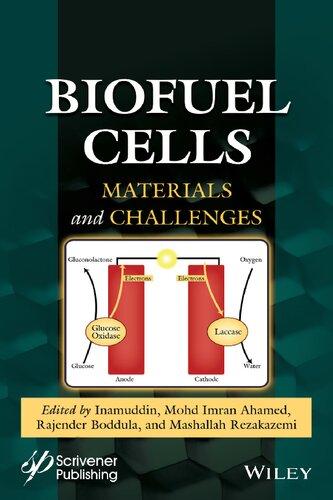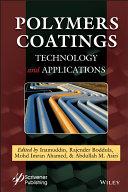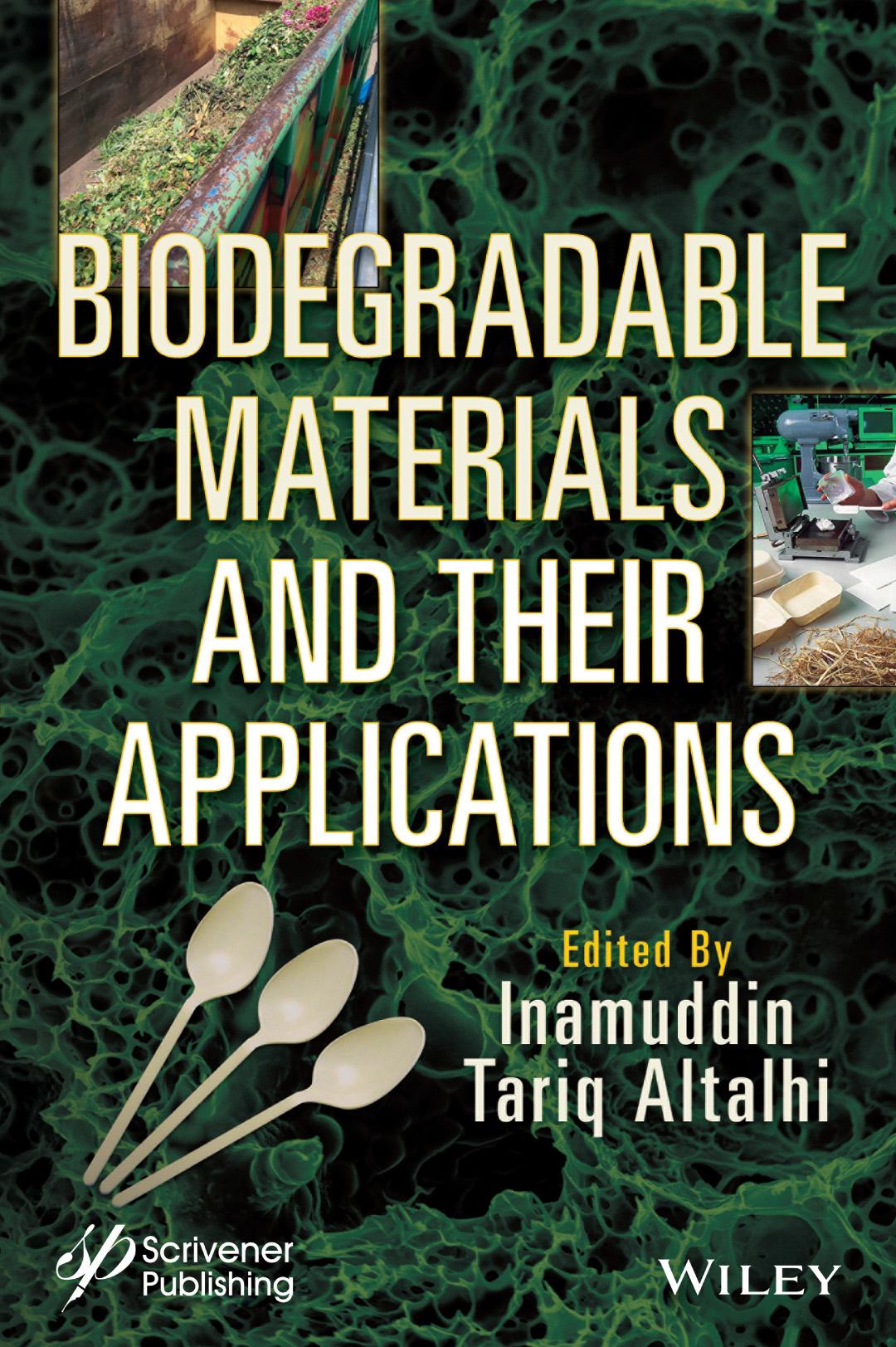Biodegradable Materials and Their Applications
Edited by Inamuddin and Tariq Altalhi
This edition first published 2022 by John Wiley & Sons, Inc., 111 River Street, Hoboken, NJ 07030, USA and Scrivener Publishing LLC, 100 Cummings Center, Suite 541J, Beverly, MA 01915, USA © 2022 Scrivener Publishing LLC
For more information about Scrivener publications please visit www.scrivenerpublishing.com.
All rights reserved. No part of this publication may be reproduced, stored in a retrieval system, or transmitted, in any form or by any means, electronic, mechanical, photocopying, recording, or otherwise, except as permitted by law. Advice on how to obtain permission to reuse material from this title is available at http://www.wiley.com/go/permissions.
Wiley Global Headquarters
111 River Street, Hoboken, NJ 07030, USA
For details of our global editorial offices, customer services, and more information about Wiley products visit us at www.wiley.com.
Limit of Liability/Disclaimer of Warranty
While the publisher and authors have used their best efforts in preparing this work, they make no representations or warranties with respect to the accuracy or completeness of the contents of this work and specifically disclaim all warranties, including without limitation any implied warranties of merchantability or fitness for a particular purpose. No warranty may be created or extended by sales representatives, written sales materials, or promotional statements for this work. The fact that an organization, website, or product is referred to in this work as a citation and/or potential source of further information does not mean that the publisher and authors endorse the information or services the organization, website, or product may provide or recommendations it may make. This work is sold with the understanding that the publisher is not engaged in rendering professional services. The advice and strategies contained herein may not be suitable for your situation. You should consult with a specialist where appropriate. Neither the publisher nor authors shall be liable for any loss of profit or any other commercial damages, including but not limited to special, incidental, consequential, or other damages. Further, readers should be aware that websites listed in this work may have changed or disappeared between when this work was written and when it is read.
Library of Congress Cataloging-in-Publication Data
ISBN 978-1-119-90490-8
Cover image: Pixabay.Com
Cover design by Russell Richardson
Set in size of 11pt and Minion Pro by Manila Typesetting Company, Makati, Philippines
2.4.1
2.4.5
2.4.6
4 Biodegradable and Bioactive Films or Coatings
Juliana Santos Delava, Keiti Lopes Maestre, Carina Contini Triques, Fabiano Bisinella Scheufele, Veronice Slusarski-Santana and Mônica Lady Fiorese
4.1 Introduction
4.2
4.2.1
4.2.2
4.3 Films or Coatings Based on Proteins From Fish
4.3.1
4.3.2 Development of Protein-Based Films or Coatings
4.3.2.1 Fish Proteins and Processes for Obtaining Collagen/Gelatin and Myofibrillar Proteins
4.3.2.2 Development of Biodegradable and Bioactive Films or Coating
4.3.3 Development of Protein-Based Films or Coatings Incorporated With Additives and/or Plasticizers
4.3.3.1 Films or Coatings Incorporated With Organic Additives and/or Plasticizers and Their Applications
4.3.3.2 Films or Coatings Incorporated With Inorganic Additives and/or Plasticizers
Marcia Parente Melo da Costa and Ivana Lourenço de Mello Ferreira
5.1 Introduction
5.2 Biohydrogels: Superabsorbent Materials
5.3 Polysaccharides: Biopolymers from Renewable Sources
5.3.1
5.3.2
5.3.3
5.3.4 Carrageenans
5.4 Applications of Superabsorbent Biohydrogels (SBHs)
6 Bioplastics in Personal Protective Equipment
Tapia-Fuentes Jocelyn, Cruz-Salas Arely Areanely, Alvarez-Zeferino Juan Carlos, Martínez-Salvador Carolina, Pérez-Aragón Beatriz and Vázquez-Morillas Alethia
6.1 Introduction
6.2
6.3
6.2.2
6.3.2
6.2.1.4
6.2.1.5
6.2.2.1
6.2.2.2
6.2.2.3
6.2.2.4
6.3.1.1
6.3.1.2
6.3.1.3
6.3.2.1
6.3.2.2
6.4
6.4.1
6.4.2
6.4.3
6.5 International Standards Applied to Biodegradable Plastics and Bioplastics
6.6 Conclusions
8
8.7
Pallavi K.C., Arun M. Isloor and Lakshmi Nidhi Rao
Ahuja and Sanjeev Kumar Ujjain
Mehdi Ebrahimi and Waruna L. Dissanayaka
Sharmila Jasmine and Rajapandiyan Krishnamoorthy
Maria da Gloria C. Silva, Anderson O. de Medeiros and Leonie A. Sarubbo
Tuba Saleem, Ayesha Mahmood, Muhammad Zubair, Ijaz Rasul, Aansa Naseem and Habibullah Nadeem
18.4.4 Sugar Industry Waste (molasses) as Substrate for PHA Synthesis
18.7
18.4.7
18.7.1
19.3 Application of Plastic-Degrading Microbes
19.3.1
19.3.2
19.3.1.1
19.3.1.3
19.3.1.4
19.3.1.5
19.3.2.1
19.4
19.4.1
19.4.3
19.5
19.5.1
20 Paradigm Shift in Environmental Remediation
Biswajit Debnath, Saswati Gharami, Suparna Bhattacharyya, Adrija Das and Ankita Das
20.1
20.2
20.3
20.3.1
20.3.2
20.3.3
S. Bharadwaj, Vivek Dhand and Y. Kalyana Lakshmi
21.1
21.7.6
22
Mohammad Amir, Naushin Bano, Mohd. Rehan Zaheer, Tahayya Haq and Roohi
Elsa Cherian, Jobil J. Arackal, Jayasree Joshi T. and Anitha Krishnan V. C.
23.4 Synthesis of Biodegradable Pots 661
23.5 Effect of Biopots on Plant Growth and Quality 663
23.6 Quality Testing of Biodegradable Pots 664
23.7 Consumer Preferences of Biodegradable Pots 665
23.8 Future Perspectives 666
23.9 Conclusion 667 References 667
24 Applications of Biodegradable Polymers and Plastics
Parveen Saini, Gurpreet Kaur, Jandeep Singh and Harminder Singh
24.1 Introduction 674
24.2 Biopolymers/Bioplastics 675
24.3 Applications of Biodegradable Polymers/Plastics 677
24.3.1 Biomedical Applications 677
24.3.1.1 Biodegradable Polymers in the Development of Therapeutic Devices in Tissue Engineering 677
24.3.1.2 Biodegradable Polymers as Implants 678
24.3.1.3 Biobased Polymers as Drug Delivery Systems 679
24.3.2 Other Commercial Applications 679
24.3.2.1 Biodegradable Polymers as Packaging Materials 680
24.3.2.2 Biodegradable Plastics in Electronics, Automotives, and Agriculture 681
24.3.2.3 Biobased Polymer in 3D Printing 681
24.4 Conclusion 682 References 682
25 Biopolymeric Nanofibrous Materials for Environmental Remediation 687
Pallavi K.C. and Arun M. Isloor
25.1 Introduction 688
25.2 Fabrication of Nanofibers 689
25.3 Nanofibrous Materials in Environmental Remediation 691
25.3.1 Water Purification 691
25.3.2 Air Filtration 702
25.3.3 Soil-Related Problems 705
25.4 Conclusions 708 References 709
26
Aansa Naseem, Farrukh Azeem, Muhammad Hussnain Siddique, Sabir Hussain, Ijaz Rasul, Tuba Saleem, Arfaa Sajid and Habibullah Nadeem 26.1
26.3
26.4
26.7
26.8
Panchami H. R., Arun M. Isloor, Ahmad Fauzi Ismail and Rini Susanti 27.1
27.3.1
27.3.1.1
27.3.1.2
27.3.2 Mechanism of Bioflocculation
27.3.3 Some of the Examples for Protein Recovery Using Biodegradable Polymer
27.3.3.1 Chitosan as Flocculant
27.3.3.2
27.3.3.3
27.4 Recovery of Proteins by Aqueous Two-Phase System
27.5 Types of the Aqueous Two-Phase System and Phase Components
27.6 Recovery Process and Factors Influencing the Aqueous Two-Phase System
27.7
27.8
27.9
27.10
27.12.1
27.12.3
27.14
Niharika Kulshrestha
28.1
28.3
28.3.1
28.3.2 Biodegradable Semiconductors
28.4
29 Importance and Applications of Biodegradable Materials and Bioplastics From the Renewable Resources 789
Syed Riaz Ahmed, Fiaz Rasul, Aqsa Ijaz, Zunaira Anwar, Zarsha Naureen, Anam Riaz and Ijaz Rasul
29.1 Biodegradable Materials 790
29.2 Bioplastics 791
29.3 Biodegradable Polymers 794
29.3.1 Classification of Biodegradable Polymers 794
29.3.1.1 Gelatin 795
29.3.1.2 Chitosan 796
29.3.1.3 Starch 797
29.3.2 Properties of Bioplastics and Biodegradable Materials 797
29.4 Applications of Bioplastics and Biodegradable Materials in Agriculture 799
29.4.1 State-of-the-Art Different Applications of Bioplastics in Agriculture 800
29.4.1.1 Agricultural Nets 803
29.4.1.2 Grow Bags 803
29.4.1.3 Mulch Films 804
29.5 Applications of Microbial-Based Bioplastics in Medicine 805
29.5.1 Polylactones 805
29.5.2 Polyphosphoesters 805
29.5.3 Polycarbonates 806
29.5.4 Polylactic Acid 806
29.5.5 Polyhydroxyalkanoates 806
29.5.6 Biodegradable Stents 806
29.5.7 Memory Enhancer 807
29.6 Applications of Microbial-Based Bioplastics in Industries 808
29.6.1 Aliphatic Polyester and Starch 808
29.6.2 Cellulose Acetate and Starch 808
29.6.3 Cellulose and Its Derivative 808
29.6.4 Arboform 809
29.6.5 Mater-Bi 809
29.6.6 Bioceta 809
29.6.7 Polyhydroxyalkanoate 809
29.6.8 Loctron 810
29.6.9 Cereplast 810
29.7 Application of Bioplastics and Biodegradable Materials in Food Industry 811
29.7.1 Bioplastic and Its Resources 812
29.7.2 Food Packaging 812
29.7.3 Natural Polymers Used in Food Packaging 816
29.7.3.1 Starch-Based Natural Polymers 816
29.7.3.2 Cellulose-Based Natural Polymers 817
29.7.3.3 Chitosan or Chitin-Based Natural Polymers 817
29.7.4 Protein-Based Natural Polymers 818
29.7.4.1 Whey Protein 818
29.7.4.2 Zein 818
29.7.4.3 Soy Protein 818
29.7.5 Bioplastics Derived Chemically From Renewable Resources 819
29.7.5.1 Polylactic Acid (PLA) 819
29.7.5.2 Polyhydroxyalkanoate Composite 819
29.7.5.3 Polybutylene Succinate Composite 820
29.7.5.4 Furandicarboxylic Acid Composite 821
29.8 Application of Bioplastic Biomass for the Environmental Protection 821
29.8.1 Biodegradation of Bioplastics 822
29.8.2 Biodegradability and Environmental Effect of Renewable Materials 823
29.9 Conclusions and Future Prospects 825 References 825
Preface
Biodegradable materials have today become more compulsory due to an alarming environmental concern and growing demand for polymeric and plastic materials. Despite our sincere efforts to recycle used plastic materials, they ultimately tend to enter into the oceans. It is necessary, therefore, to ensure that these wastes do not produce any hazards in the future. This has made it urgent to replace the synthetic material with green material in almost all possible areas of application. In the field of medicine, biodegradable polymers are finding an immediate replacement to synthetic polymers as these materials are closest to humans. Poor management of large quantities of e-waste also attracts the application of biodegradable materials. The sudden growth of demand for online food delivery services created the need for packaging with green materials. Sooner or later, it is inedvitable these materials will find their way into almost every sphere of material application.
Biodegradable Materials and Their Applications covers a wide range of subjects and approaches starting with a general introduction of biodegradable material applications. Chapters focus on the development of various types of biodegradable materials with their applications in electronics, medicine, packaging, thermoelectric generations, protective equipment, films/coatings, 3D printing, disposable bioplastics, agriculture, and other commercial sectors. In biomedical applications, their use in the advancement of therapeutic devices, like temporary implants, tissue engineering, and drug delivery vehicles are summarized. This work is an indepth examination of the subject and it will be useful for environmentalists, engineers, faculty, students, researchers, and laboratory workers that are associated with biodegradable materials. The summaries of the work reported in the following 29 chapters are as follows:
Chapter 1 explains the necessity of the development of biodegradable materials in the electronics field. It reviews the list of suitable materials and
their properties to replace the conventional components. The improvement in the performance and the reduction in the origin of e-waste are also incorporated.
Chapter 2 focused on the synthesis and properties of various low-cost bio-composites/bio-nano composites which showed improved electrical/ ionic conductivity along with the thermoelectric behaviors and can be referred to as the active component in the thermoelectric generator.
Chapter 3 outlines the advances in biodegradable materials as a strategy to manage escalating volumes of e-waste from the electronics industry. The properties and novel applications of various biodegradable materials with the greatest potential are discussed with an emphasis on revealing the composition and working mechanism reported in the literature.
Chapter 4 presents a literature review on methods of obtaining proteins from fish waste materials and on the development of biodegradable and bioactive fish protein-based films or coatings. The incorporation of organic and inorganic additives and plasticizers can improve the functional and structural properties of materials.
Chapter 5 addresses biodegradable biohydrogels, a superabsorbent material based on polysaccharides. Properties of carboxymethylcellulose, chitosan, alginate, and carrageenan are detailed. Works on applications of superabsorbent biohydrogels are described. A panoramic overview of literature based on a bibliographic search in the ScienceDirect database from 2010 to 2021 is also presented.
Chapter 6 describes the use of biodegradable and bioplastic in personal protective equipment (PPE), the characteristics, and properties of the materials used to make them, the regulations applicable to this type of materials, as well as their protective efficiency against harmful external agents.
Chapter 7 focuses on the various applications and materials used for biodegradable protective films. Processing and fabrication of biodegradable-based protective films are also discussed in detail for industrial-level production. Moreover, the limitations in the use of biodegradable protective films in daily life applications are also explained in this chapter.
Chapter 8 discusses the plastic materials currently in use to make personal protective equipment. Sources of bioplastic and biodegradable plastics developed recently from plants and microbes are also discussed. Suggestions are made on how eco-friendly plastics can replace conventional plastics in the PPE.
Chapter 9 focuses on the cutting-edge technology of novel bioactive and biodegradable materials as essential components in modern dentistry.
A review on the development of biodegradable materials and speculations on future research directions have been made.
Chapter 10 illustrates the information about widely applicable biodegradable and biocompatible polymeric materials in dentistry. It also contains studies related to the model polymeric materials incorporated with some bioactive agents such as bio-glass that aids in several dental conditions. The structure, properties, and dental applications of various biobased compounds have been explained based on the traced literature.
Chapter 11 highlights the current fabrication technologies and essential considerations in the production of scaffolds for bone tissue engineering. The biodegradation mechanism and interface biology are also discussed in detail. A comprehensive summary of the available biodegradable bone substitutes is provided, detailing the composition and indication of each product.
Chapter 12 discusses the biodegradation testing of elastomers along with the preparation strategies of biodegradable elastomers. A brief overview details their biocompatibility in the degradation profile. The focus is given to the potential of these biodegradable elastomers in medical field tests along with their significance in the medical field of tissue engineering and drug delivery.
Chapter 13 gives comprehensive information about biodegradable implant materials. The biodegradability concept is explained, and detailed information about biodegradable metals and biodegradable polymers is shared. Properties and degradation mechanisms of these materials are given and also examples of the usage of these materials in biomedical applications are presented in the chapter.
Chapter 14 details the recent advancements in the regeneration of pulp and periodontal complex using biodegradable biomaterials. The application of 3D printing, nanotechnology, and stem cell/gene therapy in the functional regeneration of periodontium is discussed. Furthermore, the challenges and barriers in the clinical translation of research studies are addressed.
Chapter 15 explores the recent developments in biomaterial research mainly for medical applications. Different types of biocompatible materials like polymers, metals, and ceramics used in various healthcare applications are discussed in detail. This chapter also emphasizes the comprehensive report of the biomaterials used in medical 3D printing technology.
Chapter 16 emphasizes the recent development and advancement of new generation biodegradable materials that enhance cell proliferation and differentiation for the treatment of hard and soft tissue defects, especially in bone defects.
Chapter 17 discusses aspects related to the biodegradability of biosurfactants, ways of cleavage of surfactant molecules, how to make them more biodegradable, and the main biodegradation method used to confirm this characteristic, studies on antimicrobial aspects and related bioactivity, as well as the search for new sustainable surfactants.
Chapter 18 details the disposable bioplastic, classes, and most commonly used bioplastic nowadays. Their production methods, substrates, microbial sources, upstream and downstream processing are discussed in detail. The major focus is given to address the applications, properties, biodegradation, comparison of plastic and bioplastic, challenges, and prospects to commercialize the disposable bioplastic.
Chapter 19 discusses microbes that are capable of plastic degradation. The various microbial species, from different environmental conditions, and their role in the plastic biodegradation process are presented. In addition, factors affecting microbial degradation, recent biotechnological tools, and future opportunities to enhance biodegradation by these microbes are also addressed.
Chapter 20 discusses the paradigm shift in environmental remediation using biodegradable materials. The chapter focuses on biosensors, biochar, biosorbent, and bioplastics. As a future vision for environmental pollution remediation, the role of information and communication technology (ICT) is discussed. Finally, sustainability aspects are described and links with sustainable development goals are established.
Chapter 21 illustrates the importance of biodegradable composites as an eco-friendly alternative medium for the packaging industry. A framework for the packaging industry is an essential criterion in meeting the requirements while selecting the most low-cost and compatible biocomposites which are easily biodegraded in nature.
Chapter 22 highlights the benefits of biodegradable plastics that have the possibilities to replace conventional plastics. The main focus is on the exposure of the various biological materials that are used for its production.
Chapter 23 discusses the environmental benefits of using alternative containers which are nature friendly. This chapter covers a variety of subjects, including materials for creating biodegradable pots, synthesis of biodegradable pots, the impact of biodegradable pots on plant development, and the quality and testing of biodegradable pots.
Chapter 24 focuses on the growth of various types of biodegradable polymers/plastics and their applications in medicine, packaging, electronics, 3D printing, agriculture, and other commercial sectors. The uses of biopolymers in the advancement of therapeutic devices like temporary
Preface xxix
implants, tissue engineering, and drug delivery vehicles are discussed in detail.
Chapter 25 discusses aspects regarding the use of bio-polymeric nanofibrous materials for environmental restoration. It describes the methodologies and parameters that are employed in the fabrication of nanofibers. The structure, properties, and applications of the different bio-polymeric nanofibrous materials that are reported have been traced. It also includes the latest advancements employed in the tailoring of nanofibrous materials.
Chapter 26 discusses the various sources of natural and waste oils for the production of bioplastics. The most common oil discussed in the chapter is waste cooking oil. Some genetic approaches are also discussed for the improvement in bioplastic production from waste cooking oil with its impact and assessment techniques.
Chapter 27 endows an inclusive introduction to the biodegradable polymers for the protein recovery process. A concise summary of the techniques using biodegradable polymers such as coagulation/flocculation, aqueous two-phase system, and membrane technology are discussed. Lastly, it highlighted the challenges and the future perspective of using biodegradable polymers for protein recovery.
Chapter 28 discusses the types of polymers based on their production and the nature of biodegradability. Additionally, the classification of biodegradable polymers as insulators, semiconductors, and conductors is discussed. The major focus is given to communicate the role and applications of biodegradable polymers in various electronic devices.
Chapter 29 discusses the importance of biodegradable materials, environmental threats from non-biodegradable materials, and their replacement by biodegradable materials is discussed. Moreover, the classification, properties, applications, and prospects of biodegradable materials, as well as bioplastics in different sectors such as agriculture, medicines, food, and industries, are covered.
The Editors July 2022











